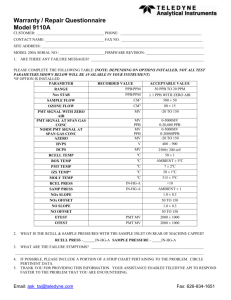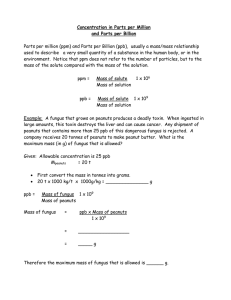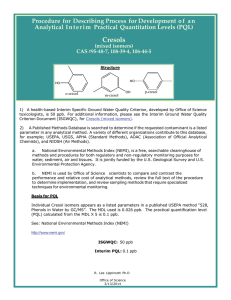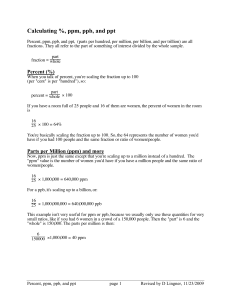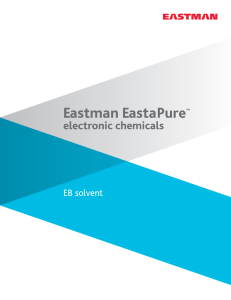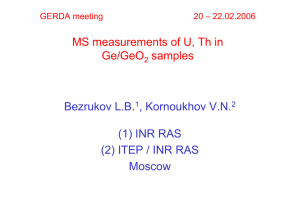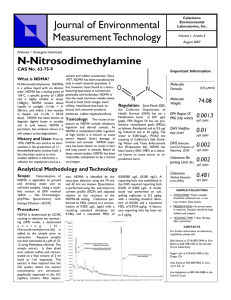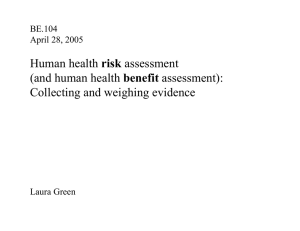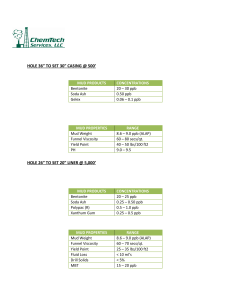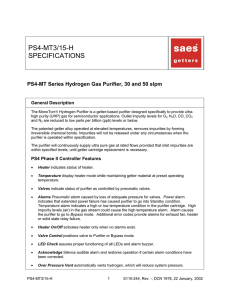1,2,3-Trichloropropane
advertisement
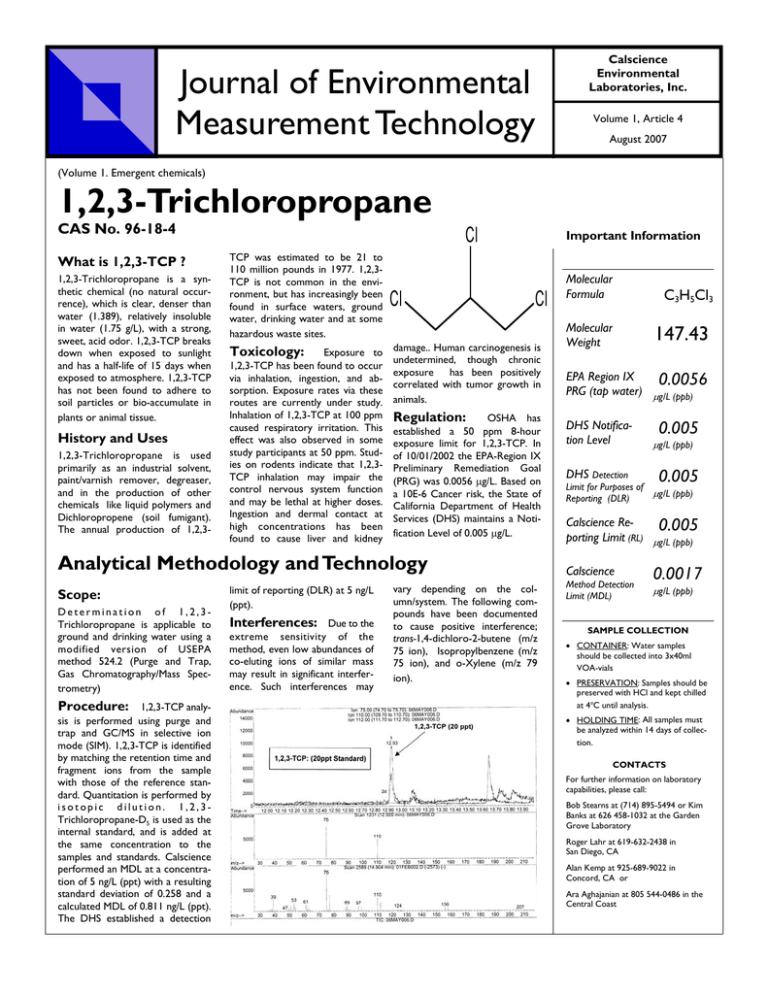
Journal of Environmental Measurement Technology Calscience Environmental Laboratories, Inc. Volume 1, Article 4 August 2007 (Volume 1. Emergent chemicals) 1,2,3-Trichloropropane CAS No. 96-18-4 What is 1,2,3-TCP ? 1,2,3-Trichloropropane is a synthetic chemical (no natural occurrence), which is clear, denser than water (1.389), relatively insoluble in water (1.75 g/L), with a strong, sweet, acid odor. 1,2,3-TCP breaks down when exposed to sunlight and has a half-life of 15 days when exposed to atmosphere. 1,2,3-TCP has not been found to adhere to soil particles or bio-accumulate in plants or animal tissue. History and Uses 1,2,3-Trichloropropane is used primarily as an industrial solvent, paint/varnish remover, degreaser, and in the production of other chemicals like liquid polymers and Dichloropropene (soil fumigant). The annual production of 1,2,3- Cl TCP was estimated to be 21 to 110 million pounds in 1977. 1,2,3TCP is not common in the environment, but has increasingly been found in surface waters, ground water, drinking water and at some hazardous waste sites. Toxicology: Exposure to 1,2,3-TCP has been found to occur via inhalation, ingestion, and absorption. Exposure rates via these routes are currently under study. Inhalation of 1,2,3-TCP at 100 ppm caused respiratory irritation. This effect was also observed in some study participants at 50 ppm. Studies on rodents indicate that 1,2,3TCP inhalation may impair the control nervous system function and may be lethal at higher doses. Ingestion and dermal contact at high concentrations has been found to cause liver and kidney Cl Important Information Cl damage.. Human carcinogenesis is undetermined, though chronic exposure has been positively correlated with tumor growth in animals. Regulation: OSHA has established a 50 ppm 8-hour exposure limit for 1,2,3-TCP. In of 10/01/2002 the EPA-Region IX Preliminary Remediation Goal (PRG) was 0.0056 μg/L. Based on a 10E-6 Cancer risk, the State of California Department of Health Services (DHS) maintains a Notification Level of 0.005 μg/L. Analytical Methodology and Technology Scope: Determination of 1,2,3Trichloropropane is applicable to ground and drinking water using a modified version of USEPA method 524.2 (Purge and Trap, Gas Chromatography/Mass Spectrometry) Procedure: 1,2,3-TCP analysis is performed using purge and trap and GC/MS in selective ion mode (SIM). 1,2,3-TCP is identified by matching the retention time and fragment ions from the sample with those of the reference standard. Quantitation is performed by isotopic dilution. 1,2,3Trichloropropane-D5 is used as the internal standard, and is added at the same concentration to the samples and standards. Calscience performed an MDL at a concentration of 5 ng/L (ppt) with a resulting standard deviation of 0.258 and a calculated MDL of 0.811 ng/L (ppt). The DHS established a detection limit of reporting (DLR) at 5 ng/L (ppt). Interferences: Due to the extreme sensitivity of the method, even low abundances of co-eluting ions of similar mass may result in significant interference. Such interferences may vary depending on the column/system. The following compounds have been documented to cause positive interference; trans-1,4-dichloro-2-butene (m/z 75 ion), Isopropylbenzene (m/z 75 ion), and o-Xylene (m/z 79 ion). Molecular Formula C3H5Cl3 Molecular Weight 147.43 EPA Region IX 0.0056 PRG (tap water) μg/L (ppb) DHS Notification Level 0.005 μg/L (ppb) 0.005 DHS Detection Limit for Purposes of μg/L (ppb) Reporting (DLR) Calscience Re0.005 porting Limit (RL) μg/L (ppb) Calscience Method Detection Limit (MDL) 0.0017 μg/L (ppb) SAMPLE COLLECTION • CONTAINER: Water samples should be collected into 3x40ml VOA-vials • PRESERVATION: Samples should be preserved with HCl and kept chilled at 4oC until analysis. • HOLDING TIME: All samples must be analyzed within 14 days of collection. CONTACTS For further information on laboratory capabilities, please call: Bob Stearns at (714) 895-5494 or Kim Banks at 626 458-1032 at the Garden Grove Laboratory Roger Lahr at 619-632-2438 in San Diego, CA Alan Kemp at 925-689-9022 in Concord, CA or Ara Aghajanian at 805 544-0486 in the Central Coast

